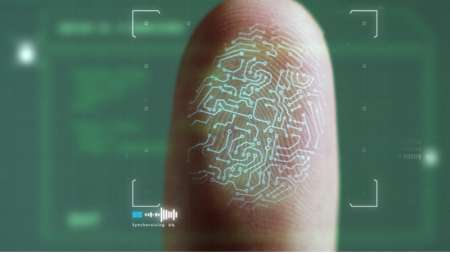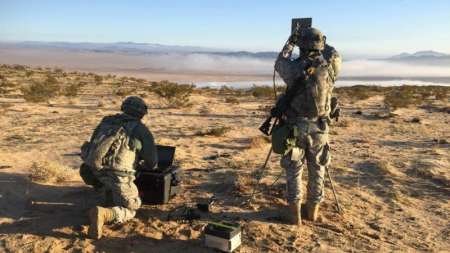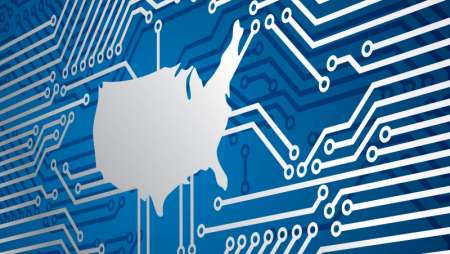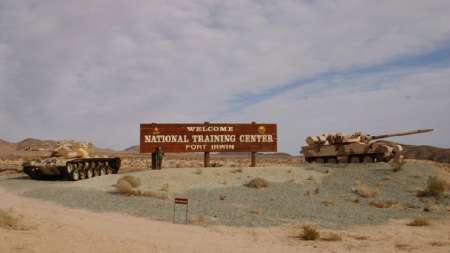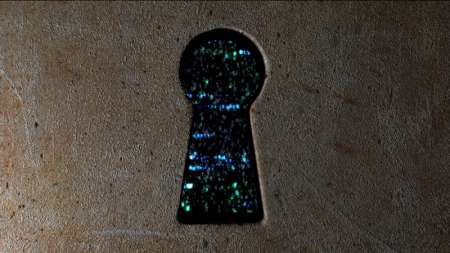As we barrel into Valentine’s Day, seems industry is falling in love again with NIST’s cyber framework makeover. Business groups and the tech sector reacted favorably to the latest update to the National Institute of Standards and Technology (NIST) Framework for Improving Critical Infrastructure, but noted more work needs to be done in several key areas. […]
Latest certification gives Cisco a hat trick in the secure government cloud. […]
MeriTalk has confirmed ringside rumors that Jeff Eisensmith is looking to hang up his gloves at DHS. After more than five years going toe-to-toe with America’s cyber adversaries, we’d like to wish America’s leading CISO the very best as he punches out. […]
The FBI fell far short of its own goals for fighting cybercrime in 2017, according to a Department of Justice (DOJ) audit. The FBI reported disrupting or dismantling 262 high-level criminal operations targeting global U.S. interests, only about half of its goal of 500, and roughly one-tenth of the 2,492 cybercrime operations it broke up in 2014. […]
The Department of Defense (DoD) would like to get rid of the Common Access Card (CAC), but the problem–finding a suitable replacement. It turns out that the replacement won’t be one thing, but multiple biometric identifiers that combine to make out a person’s identity. […]
Verizon is walking the talk on innovation–appointing a new innovation czar to infuse next-generation technologies into its public sector and education offerings. […]
The Government Accountability Office (GAO) isn’t just a compiler of Fed IT’s naughty and nice lists–the agency’s also a consumer of IT. And, it’s rolling plans for IT modernization. […]
Contractor CSRA is set to launch the Defense Information Systems Agency’s (DISA) milCloud 2.0 on Feb. 1–three months ahead of schedule–combining a commercially run cloud offering within the confines of DISA’s data center. In its first phase, milCloud 2.0 will offer scalable Infrastructure as a Service (IaaS) to customers from two locations. […]
It’s a converged world for many Federal data centers, and that trend is likely to continue as agencies move to modernize their information technology infrastructures. […]
If you took a look at Microsoft’s recent government contract announcements and felt like you’re seeing double–well, you wouldn’t be wrong. Azure Government recently received two new FedRAMP certifications from Immigrations and Customs Enforcement (ICE) and the U.S. Air Force. As of Jan. 24, Azure Government now has a FedRAMP High ATO from ICE and a Level-4 ATO for the Air Force’s common computing environment. […]
The idea of a scorecard seems like a quaint notion, conjuring black and white photos of somebody’s grandad in a fedora, licking the pencil tip before recording the latest play at the old ballgame in his program. […]
While the military services and other Department of Defense components get on board toward greater adoption of cloud services, the Defense Information Systems Agency (DISA) doesn’t want them to forget about security, particularly on the part of cloud providers. […]
The Army’s work on the Internet of Battlefield Things (IoBT) is more than just a way to carve out a catchy name for the proliferation of smartphones, tablets, wearable devices, cameras and embedded devices that take the field with military forces. It also underscores the most important element of having those connected devices–the data collection and automated analytics capabilities required to make good use of the information they provide. […]
House Cybersecurity and Infrastructure Protection Subcommittee chairman Rep. John Ratcliffe, R-Texas, put the Continuous Diagnostics and Mitigation (CDM) program under the microscope in a hearing with industry experts last week. […]
Thousands of Federal contractors could find themselves scrambling to comply with stringent cybersecurity requirements after the General Services Administration (GSA) announced it is tightening the rules for protecting sensitive, non-classified data. […]
The Department of Defense (DoD) says it’s getting ready for the big one, but in this case, it’s not talking about a kinetic attack measured in megatons. It’s referring to a cyberattack measured in terabits. […]
A lot of the Army’s most high-profile modernization projects concern complex, expensive weapons systems that emerge from research and development, budgeting, and procurement process inside the halls of the Pentagon and other facilities and outside of the experience of most people. But some key elements of the Army’s efforts to keep pace with the demands of a changing world are so familiar to people at home, at work, or in a coffee shop that they take them for granted. An example of this is good, reliable Wi-Fi. […]
We see lots of moves to IT modernization in motion–but how does it all come together? The White House wants to tie those into a broader program, creating a new ecosystem to fuel government-wide modernization efforts. […]
As momentum continues to build for agencies to implement strategies and technologies to modernize their IT environments, agency managers will have to be careful to avoid missteps that could hamper successful digital transformation. […]
Russian hackers might get all the attention these days, but the Department of Defense (DoD) hasn’t forgotten about WikiLeaks and Edward Snowden. […]
The Federal government wants to speed up adoption of cloud email and collaboration systems. But first it needs an accurate measure of how many agencies have not yet migrated to cloud email. There is definitive data on the benefits of cloud-based email solutions among CFO Act agencies, but no clear data regarding the adoption of cloud-based solutions at small and independent agencies, according to the Report to the President on Federal IT Modernization. […]
The Report to the President on Federal IT Modernization recommends modernizing the Trusted Internet Connections (TIC) program, which is critical to the Federal government’s broader digital transformation strategy. By the end of this month, the report calls for the Office of Management and Budget (OMB) to conduct data calls to agencies to discuss their cloud migration projects, and identify any delays caused by current TIC policy. And, by March 2, OMB will share a “preliminary update to the TIC policy,” and launch select pilot projects to test the new TIC requirements. […]
The Modernizing Government Technology Act (MGT) and other related initiatives are pushing agencies to move away from aging, legacy applications as well as costly, complex software projects. The goal is to have more secure, agile, and cost-effective IT infrastructures replace them. […]
A bipartisan bill introduced in the Senate just before the Christmas break aimed at protecting American elections from foreign cyberattacks has been getting generally positive reviews from security professionals. […]
The rising frequency and intensity of cyberattacks on information technology systems that support the government, military, businesses, and critical infrastructure has raised awareness among senior Federal agency managers that security controls cannot be bolted on to systems as an afterthought. Security must be a core part of the design of systems from the beginning, and considered throughout the development lifecycle. […]
The military’s use of unmanned, and even semi-autonomous aircraft has been extensive, but no one’s ever pretended that it would be as easy as point-and-click. That day could be getting closer however, as the Marine Corps recently demonstrated how autonomous helicopter flights could clear a few final hurdles and move towards more widespread military use. […]
The Department of Defense (DoD) caused a slight disturbance in the Force the other day when it pulled back an announcement related to its cloud computing initiative over some Star Wars-related acronyms. The memo announced the creation of the Central Cloud Computing Program Office, which would go by the acronym C3PO, and would support the Joint Enterprise Defense Infrastructure (JEDI) Cloud, Bloomberg reported. The memo was scrubbed of the Star Wars references and reissued. […]
In the domain of warfare known as cyberspace, the Air Force’s cyber warriors naturally play a lot of defense, but they do it with the help of cyber weapons designed to add an important layer to the protection of the service’s operations and data. One example is the Air Force Cyberspace Defense (ACD) weapon system, a custom-built, $543 million suite that automates monitoring and analysis of activity on the Air Force Network (AFNET). […]
In 2015, Defense Department (DoD) contractors that handle sensitive DoD information were given extra time to comply with new department cybersecurity regulations. That grace period now is up, and companies must meet these requirements in 2018. […]
The General Services Administration’s (GSA) Emerging Citizen Technology Office (ECTO) is working with a network of partners from more than 300 Federal, state, and local government entities to help evaluate, test, and implement IT modernization initiatives with emerging technologies. […]





